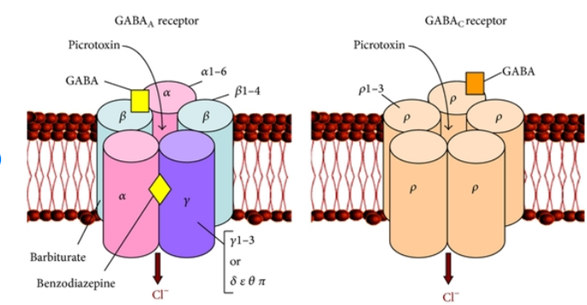- Home
-
Screening
- Ionic Screening Service
-
Ionic Screening Panel
- Sodium Channels
- Potassium Channels
- Chloride Channels
- Calcium Channels
- TRP Channels
- ATP gated P2X Channels
- ASICs
- Nicotinic Acetylcholine Receptors
- Ionotropic Glutamate-gated Receptors
- GABAa Receptors
- Glycine Receptors
- 5-HT Receptors3
- Cystic Fibrosis Transmembrane Conductance Regulators (CFTR)
- Other Ion Channels
- Stable Cell Lines
- Cardiology
- Neurology
- Ophthalmology
-
Platform
-
Experiment Systems
- Xenopus Oocyte Screening Model
- Acute Isolated Cardiomyocytes
- Acute Dissociated Neurons
- Primary Cultured Neurons
- Cultured Neuronal Cell Lines
- iPSC-derived Cardiomyocytes/Neurons
- Acute/Cultured Organotypic Brain Slices
- Oxygen Glucose Deprivation Model
- 3D Cell Culture
- iPSC-derived Neurons
- Isolation and culture of neural stem/progenitor cells
- Animal Models
- Techinques
- Resource
- Equipment
-
Experiment Systems
- Order
- Careers
- Home
- Symbol Search
- GABRA5
GABRA5
| Catalog | Product Name | Gene Name | Species | Morphology | Price |
|---|---|---|---|---|---|
| ACC-RI0008 | Human GABRA5 Stable Cell Line-HEK293 | GABRA5 | Human | Epithelial | INQUIRY |
Gamma-aminobutyric acid (GABA) A receptor α-5, also known as GABRA5, is a protein. It is encoded by the GABRA5 gene in humans and belongs to the large gamma-aminobutyric acid (GABA) receptor family. It is the main inhibitory neurotransmitter in the mammalian central nervous system (CNS). It activates ionic anion conductive GABAA receptors (GABAARs) and metabotropic GABAB receptors affect neuronal activity.

Figure 1. A schematic representation of ionotropic GABA receptors. (E. Popova, et al.; 2014)
The gene encoding GABRA5 is located on human chromosomes 15q11–q13. This gene is contained within approximately 800 kb distal to the region associated with Prader-Willi and Angelman syndromes. GABRA5 is encoded by 11 exons (65 to 924 bp in length) within 86 kb. GABRA5 is widely expressed in the brain. The combination of cDNA library screening and 5'RACE analysis identified three different mRNA subtypes of GABRA5 in adult and fetal brain tissues, each differing only in non-coding 5'UTR sequences. The alignment of the genome and cDNA sequences of GABRA5 showed that mRNA subtypes were produced by three alternative first exons 1A, 1B and 1C. Northern blot analysis showed that the expression of GABRA5 is not only tissue-specific but also region-specific in the brain. CAT reporter gene detection revealed promoter elements near the 5'of each first exon. The GABRA5 promoter region lacks TATA and CCAAT boxes, but contains several other common transcription factor recognition sequences.
The Function of GABRA5 Protein
GABAAR is a member of the Cys ring ligand-gated ion channel family, which consists of five subunits and 19 proteins. As a member of the GABAARs family, GABRA5 is mainly located outside the synapse, and produces a long-lasting, strong current. Studies have shown that extrasynaptic GABRA5 is expressed at high levels in the hippocampus, and low in the cortex, olfactory bulb, and hypothalamus. The activation of this receptor produces inhibits tension conductivity, thereby reducing network excitability and synaptic plasticity. In addition, GABRA5 also plays a nutritional role in learning and memory processes and regulating the development of neural circuits. The dysregulation of extrasynaptic GABAA receptors is related to a variety of diseases, including epilepsy, down syndrome, mood disorders and long-term memory disorders caused by anesthetics.
GABRA5 and Disease
Trisomy 21 or Down syndrome
Trisomy 21 or Down syndrome (DS) is the most common cause of intellectual disability of genetic origin. The Ts65Dn (TS) mouse is the most commonly used and typical mouse model of DS, which shows many cognitive, neuromorphic and biochemical abnormalities found in human conditions. Studies have shown that one of the mechanisms responsible for cognitive deficits in this mouse model is impaired GABA-mediated inhibition. Since the regulatory role of GABAAα5 subunit receptors in cognitive processes is well known, these receptors are considered to be potential targets for improving degenerative dementia and mental retardation.
Epileptic Encephalopathy, Early Infantile, 79 (EIEE79)
The disease is a kind of epileptic encephalopathy, a heterogeneous group of severe early-onset epilepsy, characterized by refractory seizures, neurodevelopmental disorders, and poor prognosis. EIEE79 is an autosomal dominant inheritance type, which is characterized by refractory seizures in the first few months of life. The development was normal before the onset, and the cognitive and motor delays were obvious after the onset. Brain imaging can show hypomyelination, brain atrophy and thinning of the corpus callosum. Existing studies have found that GABRA5 is the causative gene of early-onset epileptic encephalopathy and expands the phenotype spectrum of mutant GABRA1. Together, their neurotransmission defects contribute to the phenotype of early-onset epileptic encephalopathy. The GABAA receptors containing mutant α5 and α1 subunits have reduced cell surface and total cell expression, altered endoplasmic reticulum processing, impaired synaptic clustering, decreased GABAA receptor function and decreased GABA binding capacity.
References
- Hernandez CC, et al.; Altered inhibitory synapses in de novo GABRA5 and GABRA1 mutations associated with early onset epileptic encephalopathies. Brain. 2019, 142(7):1938-1954.
- Vidal V., et al. Decreasing the expression of GABAA α5 subunit-containing receptors partially improves cognitive, electrophysiological, and morphological hippocampal defects in the Ts65Dn model of Down Syndrome. Molecular Neurobiology. 2018, 55(6):4745-62.
- Glatt K, et al.; Structure and organization of GABRB3 and GABRA5. Genomics. 1997 Apr 1;41(1):63-9.
- Kim Y, et al.; Human gamma-aminobutyric acid-type A receptor alpha5 subunit gene (GABRA5): characterization and structural organization of the 5' flanking region. Genomics. 1997, 42(3):378-87.
- E. Popova, et al.; Ionotropic GABA Receptors and Distal Retinal ON and OFF Responses. Scientifica. 2014, 2014: 149187.
Inquiry
